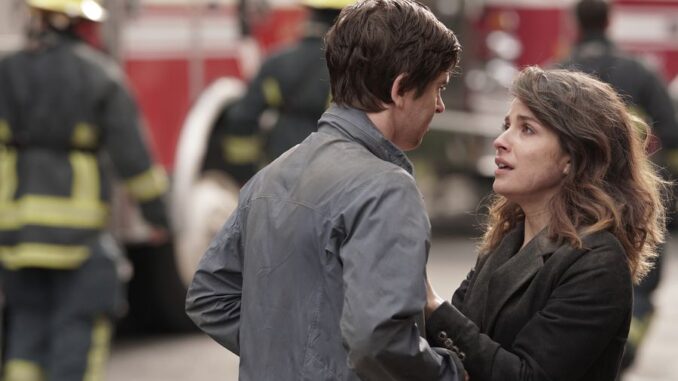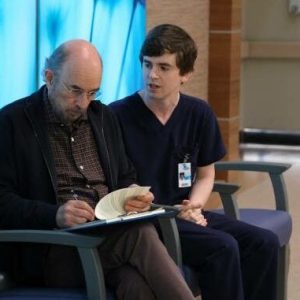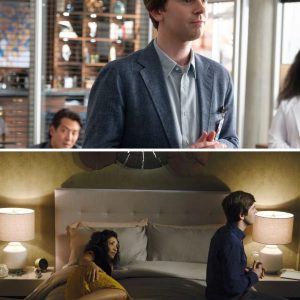In The Good Doctor, Dr. Shaun Murphy is a name synonymous with genius. A young surgeon with savant syndrome and autism, Shaun performs medical miracles that often leave his colleagues in awe. But beneath the clinical brilliance and surgical triumphs lies something far more fragile — the quiet, gnawing presence of loneliness.
We first meet Shaun as an outsider, a man whose talents are questioned because of the way he communicates. He struggles to read social cues, missteps in conversations, and rarely makes eye contact. These traits aren’t flaws — they’re part of who he is. But in a world driven by fast connections and unspoken rules, they isolate him. Even as Shaun proves himself over and over again in the operating room, the deeper struggle — to belong, to be understood — remains painfully unresolved.
From the beginning, it’s clear that Shaun’s story isn’t just about a gifted doctor — it’s about a human being searching for connection. We watch him move into a new city, into a hospital full of unfamiliar faces, with only a few people willing to truly see him. Dr. Glassman is one of those people. His fatherly presence is a lifeline, but even he can’t always shield Shaun from the isolation that creeps in when the rest of the world doesn’t quite know how to make space for difference.
One of the most haunting realities of Shaun’s life is that even when he’s surrounded by people, he’s often still alone. There’s a scene in an early episode where Shaun sits by himself in the hospital cafeteria, watching others laugh, eat, connect. It’s a powerful visual — the boy genius with a scalpel in his hand and loneliness in his heart. Despite saving lives daily, he still wonders if anyone would choose to sit next to him. And that’s a question many people with autism — and many who aren’t — carry in silence.

The show does something brave. It doesn’t turn Shaun into a superhero. It allows him to be vulnerable. When Shaun stumbles socially, when he lashes out in frustration, when he retreats into himself after being misunderstood — these aren’t just dramatic plot points. They are reflections of what it means to navigate a world not built for you. And behind those moments is a deep, resonant truth: loneliness is not always loud. Sometimes, it’s hidden beneath success, beneath skill, beneath silence.
His relationships with others serve as windows into his inner world. With Lea, we see the first real romantic bond Shaun allows himself to explore. It’s awkward, sweet, painful, and brave. Lea doesn’t always get it right — she sometimes gets overwhelmed, confused, or even impatient. But what makes their relationship so real is that they try. They fail. They talk. They forgive. And through it all, Shaun lets someone in. Slowly, nervously — but truly.
Even in his friendship with Dr. Park, or his tension with Dr. Andrews, or the support he finds in Claire, we see the flickers of connection Shaun craves. Each of these dynamics helps chip away at the loneliness that has long defined his life. But the process is not linear. There are steps forward, and painful stumbles back.
And yet, it’s Shaun’s growth that reminds us all of something we often forget — that connection isn’t about perfection. It’s about trying. It’s about showing up. It’s about understanding that loneliness doesn’t make you weak. It makes you human.
There’s a moment later in the series where Shaun confronts the idea of family. Not the kind you’re born into, but the kind you build. His colleagues, his patients, Lea — they become his people, even when the journey to trust them is long and bumpy. And as he learns to let them in, we see the loneliness begin to shift. Not disappear — but evolve.
Because loneliness, for Shaun, isn’t just a side effect of his condition. It’s the core wound. It’s what lingers in the quiet after a successful surgery. It’s what echoes in the silence of an empty apartment. It’s what stings when a patient’s family thanks every doctor in the room but forgets him.
The Good Doctor doesn’t offer easy solutions. It never tries to “cure” Shaun of his loneliness — because that’s not the point. Instead, it shows us how he learns to live with it. How he finds strength not in being understood by everyone, but in being seen by just a few. And in doing so, it holds up a mirror to us all.
Because how many of us walk through life feeling like we’re on the outside? How many of us carry invisible walls, hoping someone will try to climb them? Shaun’s story is a reminder that brilliance and brokenness





